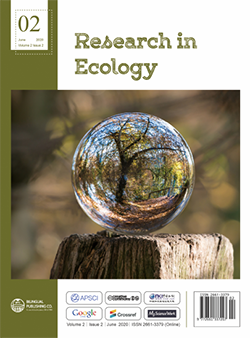
Urban Design Embracing the Wind Environment: Bezigrad Neighbourhood Case Study in Ljubljana, Slovenia
DOI:
https://doi.org/10.30564/re.v2i2.1739Abstract
Urban climate is considered one of the most important environmental criteria in urban planning, since it significantly affects the project and its placement in the space. Climate conditions are central to the study, with winds in the urban environment, their direction, intensity and changes taken into consideration designing the new interventions in space. The results of the case study were applied to the project with the intention of supporting and guiding the urban design in order to improve the comfort and quality of the environment. In this article, I explore the question of how individual morphological models affect the micro- and macroclimate conditions.The initial urban solution of the Novi Bezigrad neighbourhood is presented as a realistic model project responding to the existing urban and architectural practices and legal provisions. The project was tested in a computer model and was analysed in terms of the positive and negative effects of its impact on the wind in the planning area and the wider area in the surrounding area. The final urban design derives from the results of wind analysis.
Keywords:
Urban climate, Wind theory, Typology of buildings, Morphology, LandscapeReferences
[1] Aynsley, R. M., Melbourne, W. H., in Vickery, B. J.. Architectural Aerodynamics[M]. London: Applied Science Publishers,1977.
[2] Pogačnik, A.. Urbanistično planiranje[M]. Ljubljana: Univeza v Ljubljani, Fakulteta za gradbeništvo in geodezijo, 1999.
[3] ASCE’s Task Committee on Urban Aerodynamic. Wind Engineering for Urban Planners and Designers[M]. Reston, Virginia (US): American Society of Civil Engineers, 2011: 6-22.
[4] Memon, R.A., Leung, D.Y.. Impacts of environmental factors on urban heating [J]. Journal of Environmental Sciences, 2010, 22(12): 1903-1909. DOI: https://doi.org/10.1016/S1001-0742(09)60337-5
[5] Rajagopalan, P., Lim, K. C., Jamei, E.. Urban heat island and wind flow characteristics of a tropical city[J]. Deakin University, School of Architecture and Built Environment. Science-Direct, 2014: 161-165. DOI: https://doi.org/10.1016/j.solener.2014.05.042
[6] Rakovec, J., Bertalanič R., Cedilnik J., Gregorič G., Skok G., Žagar M., Žagar, N.. Vetrovnost v Sloveniji[M]. Ljubljana: Univerza v Ljubljani, Fakulteta za matematiko in fiziko, Oddelek za fiziko, Katerdra za meteorologijo, 2009: 5-9.
[7] Tahbaz, M.. The Estimation of the Wind Speed in Urban Areas. International Journal of Ventilation, 2019: 75-84. DOI: https://doi.org/10.1080/14733315.2006.11683833
[8] Arens, E. A.. Designing for an Acceptable Wind Speed[J]. Berkeley: University of California. Transportation Engineering Journal, 1981, 107: 127-141.
[9] Yuan, C.. Urban Wind Environment. Integrated Climate-Sensitive Planning, and Design. SpringerBriefs in Architectural Design and Technology. Singapore: Springer Singapore, 2018.
[10] Counihan, J.. Wind tunnel determination of the roughness length as a function of a fetch and the roughness density of three-dimensional roughness elements[J]. Atmos. Environ., 1971, 5: 637-642. DOI: https://doi.org/10.1016/0004-6981(71)90120-X
[11] DePaul, F. T., Shah, C. M.. Measurements of wind velocities in a street canyon[J]. Atmos. Environ., 1986, 20: 455-459. DOI: https://doi.org/10.1016/0004-6981(86)90085-5
[12] Zajic, D., Fernando, H. J. S., Calhoun, R., Princevac, M., Brown, M. J., Pardyjak, E.R.. Flow and Turbulence in an Urban Canyon[J]. Phoenix: Arizona State University, 2010: 204-210. DOI: https://doi.org/10.1175/2010JAMC2525.1
Downloads
How to Cite
Issue
Article Type
License
Copyright © 2020 Kristijan Lavtižar

This is an open access article under the Creative Commons Attribution-NonCommercial 4.0 International (CC BY-NC 4.0) License.




 Kristijan Lavtižar
Kristijan Lavtižar





